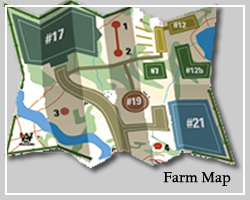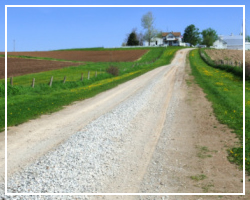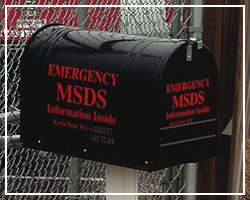Section 3. Emergency Information for Responders
| Site: | Extension Foundation Online Campus |
| Course: | Farm Security |
| Book: | Section 3. Emergency Information for Responders |
| Printed by: | Guest user |
| Date: | Friday, November 7, 2025, 11:33 AM |
Description
Here is information about emergency responders.
Properly Marking Your Farm Entrance
|
In section three, learn how to make it easy for emergency responders to locate your farm entrance. In addition, find out why it is important to have a farm map and to maintain your roads.
|
Build Your Farm Map and Keep Safe
A farm map should include a simple sketch of the layout of your farm  with the buildings and other structures, livestock pens, fence lines and roads labeled. Since emergency responders may have only a few seconds to determine what they must do when dealing with a fire, explosion, accident, crime, or biohazard on your farm, your farm map should also include a basic inventory of each structure. This will help you accurately inform first responders about potential hazards. For example, during a fire where there was no farm map, the producer told responders as much as he remembered about what was stored in the building. About 10 minutes after the conversation, an intense explosion occurred inside the barn. The farmer said, “I forgot there was a 55-gallon drum of used oil behind the door.” Keep your farm map safe and accessible. Responders to fire emergencies require full disclosure of information. Otherwise, keep details of inventory and security measures confidential to prevent crime.
|
Maintaining Driveways and Farm Roads
Farm roads must be adequate for emergency vehicles, as well as  normal farm operations. Always keep the roads to the farmstead in good repair. They should be at least 20 feet wide and capable of supporting vehicles weighing over 40,000 lbs. It is also important to have at least 14-foot height clearance, so trees and vegetation should be trimmed at least 10 feet beyond the shoulder of the road. These simple guidelines will help emergency vehicles access your facilities quickly and easily. Check your local ordinances for more information.
|
Information for Emergency Responders
What do you think would happen if one of your farm buildings caught  fire fire and no one was there to tell firefighters what the building contained? Since the fire fighters wouldn't know if pesticides or other chemicals were in the building, they might treat it as a hazardous materials fire and let it burn until the hazmat team arrived. For everyone's protection and to prevent this situation, you should have a well-hidden permanently installed mailbox or lock box that serves as an emergency information box. It should contain:
|
 had
had